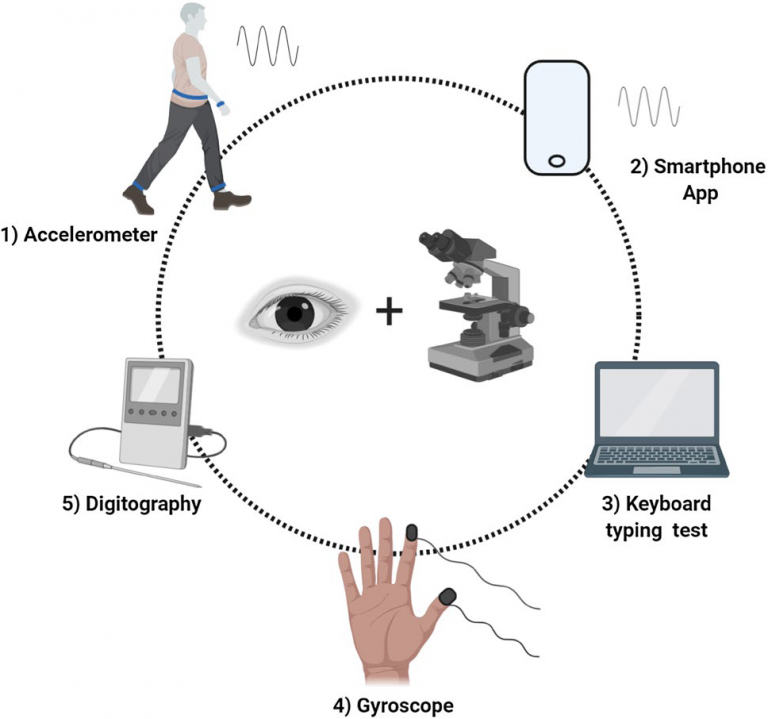MDC Publication Highlights - November 2019
16 December 2019
3D neurospheres as a novel cell-based model to study the role of GBA mutations in pathogenesis of Parkinson’s, The motor prodromes of parkinson’s disease & Clinicians’ guidebook to atypical parkinsonism

Investigating the molecular consequences of GBA mutations in 3D neurosphere cell models of Parkinson's
Mutations in the gene Glucocerebrosidase (GBA), which encodes for the enzyme Glucocerebrosidase (GCase), are the most important genetic risk factors for the development of Parkinson’s Disease. Although the exact biological mechanisms remain unclear, existing evidence suggest that loss of GCase activity damages cells’ energy production and waste disposal systems, which contributes to the development of Parkinson’s. In the current study, Prof. Schapira of the MDC and international colleagues used a unique new neuronal cell model, called 3D-neurospheres, to explore in detail the effects of GBA mutation on the function of the mitochondria – the cell’s energy producing component. 3D-neurospheres are collections of neural cells that cluster together to form a 3D spherical structure. Neurosphere can be grown in the lab using neural stem cells which can be found in people in the fat tissue under the skin and can be easily collected from healthy individuals and from patients using a simple skin biopsy. The researchers found that mitochondrial dysfunction occurs early in the development of neurons with GBA mutation and that the cellular process of disposing of damaged and dysfunctional mitochondria was also impaired in these cells. These findings suggest that mitochondrial dysfunction precedes other cellular dysfunction mechanism (at least in this cellular model) and is therefore likely to be a key feature in the pathogenesis of Parkinson’s. Furthermore, this study demonstrates the suitability of neurospheres as a model to study Parkinson’s and other GBA-related disorders and as a potential tool for therapy and drug discovery.
Moren et al. ‘GBA mutation promotes early mitochondrial dysfunction in 3D neurosphere models’. Aging, First published: 21 November 2019, DOI: 10.18632/aging.102460.
Parkinsonism Beyond Parkinson's Disease: clinicians’ guidebook to atypical parkinsonism
When facing a patient with parkinsonism, clinicians need to differentiate Parkinson's disease from numerous other disorders, the number of which is increasingly expanding due to the constant identification of new disorders that may present with, or may have parkinsonism as part of their phenotypic spectrum. At the same time, Parkinson's disease can present with a broad spectrum of phenotypes, with different underlying genetic causes and ‘atypical’ clinical features. A recent volume of the “International Review of Neurobiology“ outlines the differential diagnosis process for neurologists who encounter patients who have parkinsonism which does align with the canonical description of Parkinson’s disease. MDC clinical academic Prof Kailash Bhatia co-authored two chapters for this publication; highlighting diagnostic “red flags” and investigational tools for atypical parkinsonism, and an overview of genetic mimics of atypical parkinsonian disorders.
Mulroy, Stamelou & Bhatia. ‘How to approach a patient with parkinsonism – red flags for atypical parkinsonism’. International Review of Neurobiology, First published: 21 November 2019, DOI: 10.1016/bs.irn.2019.10.008.
Giagkou et al. ‘Genetic mimics of the nongenetic atypical parkinsonian disorders e the ‘atypical’ atypica'’. International Review of Neurobiology, First published: 21 November 2019, DOI: 10.1016/bs.irn.2019.10.008.
The motor prodromes of parkinson’s disease
The pathological processes that cause Parkinson’s disease (e.g., the death of dopaminergic neurons) very likely begin years before clinical symptoms become clearly evident and before a diagnosis is made. Subsequently, there has been a growing interest in the prodromal (pre-diagnosis) time period of Parkinson’s, as it represents a critical time for potential treatments that could slow or stop neurodegeneration in its early phases. Research into the Parkinson’s prodrome has mostly focused on non-motor symptoms which are known to be associated with increased risk for Parkinson’s, such as reduced sense of smell, REM-sleep disorder, depression, and constipation. However, much less attention has been paid to the subtle motor dysfunction that precedes overt motor and movement problems and a diagnosis of Parkinson’s. This reviews outline the main motor features which might make up the Parkinson’s “motor prodrome” and suggests methods to detect and measure them.
Simonet et al. ‘The motor prodromes of parkinson’s disease: from bedside observation to large‑scale application’. Journal of Neurology, First published: 4 December 2019, DOI: 10.1007/s00415-019-09642-0.
 Close
Close

